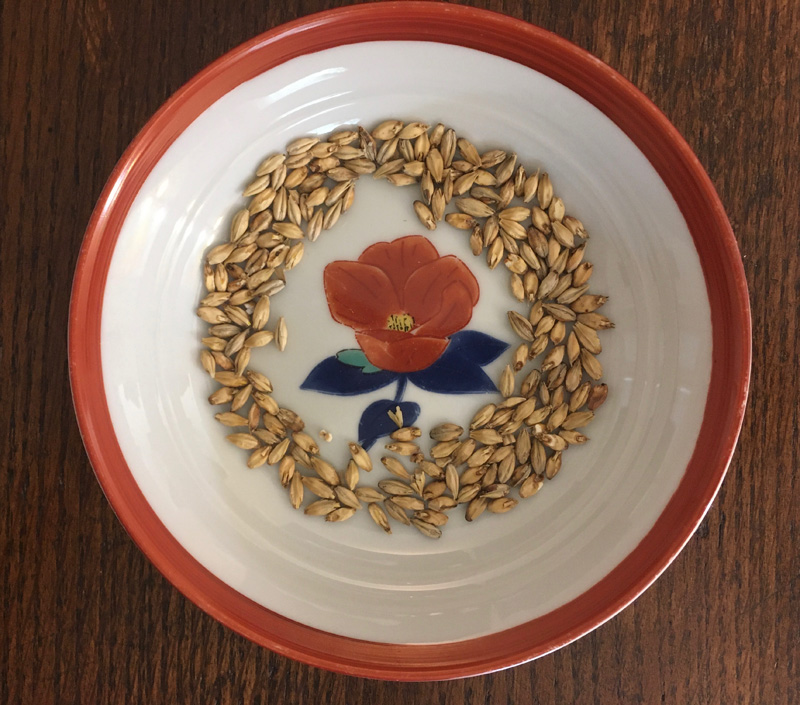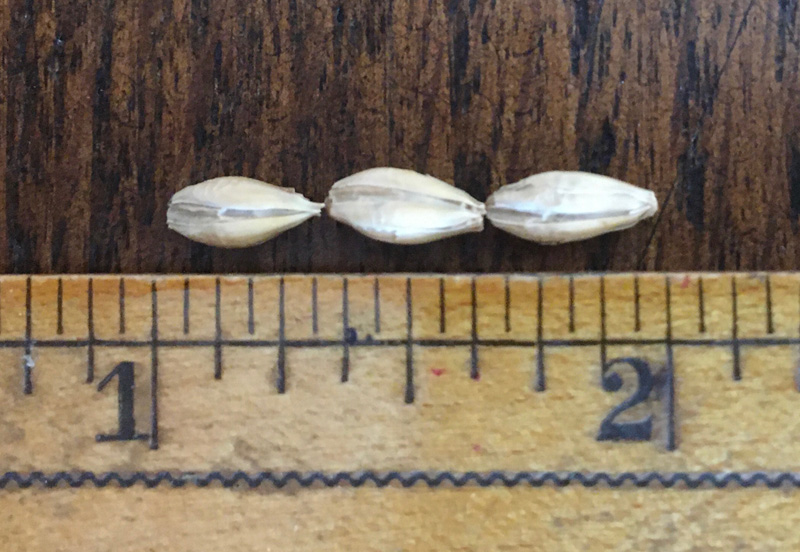According to Brittanica,
During the reign of King Edward II, in the early 14th century, the inch was defined as “three grains of barley, dry and round, placed end to end lengthwise.”
https://www.britannica.com/science/inch
I assume that Edward II was not referring to pearled barley, which is the only kind of barley that most people are familiar with today — the kind that our mothers put in the chicken soup. He likely meant a plain grain of whole barley, threshed and winnowed, as it was most commonly encountered in the day.
But being an occasional home brewer, I have some malted 2-row barley on hand. So I pulled out a small handful and tested a few randomly selected, dry, round grains for proper dimensions.

Sure enough, despite centuries of selective breeding, three corns of this 2-row brewing barley remain quite true to the inch. Although there is some small variation in the size of the grains in the sample, I found that the result was amazingly consistent no matter which three plump, round grains were randomly chosen to participate. As you can see, this group came up short by about 1/32 of an inch, but the one on the left was a smidgen below average.

One might expect that the malting process could have had some effect on the size, meaning that my barley, when raw, might have been a bit longer or shorter, thus casting uncertainty on my conclusion.
But I’m satisfied that King Edward’s barley was much like ours is today – longitudinally, at least.


